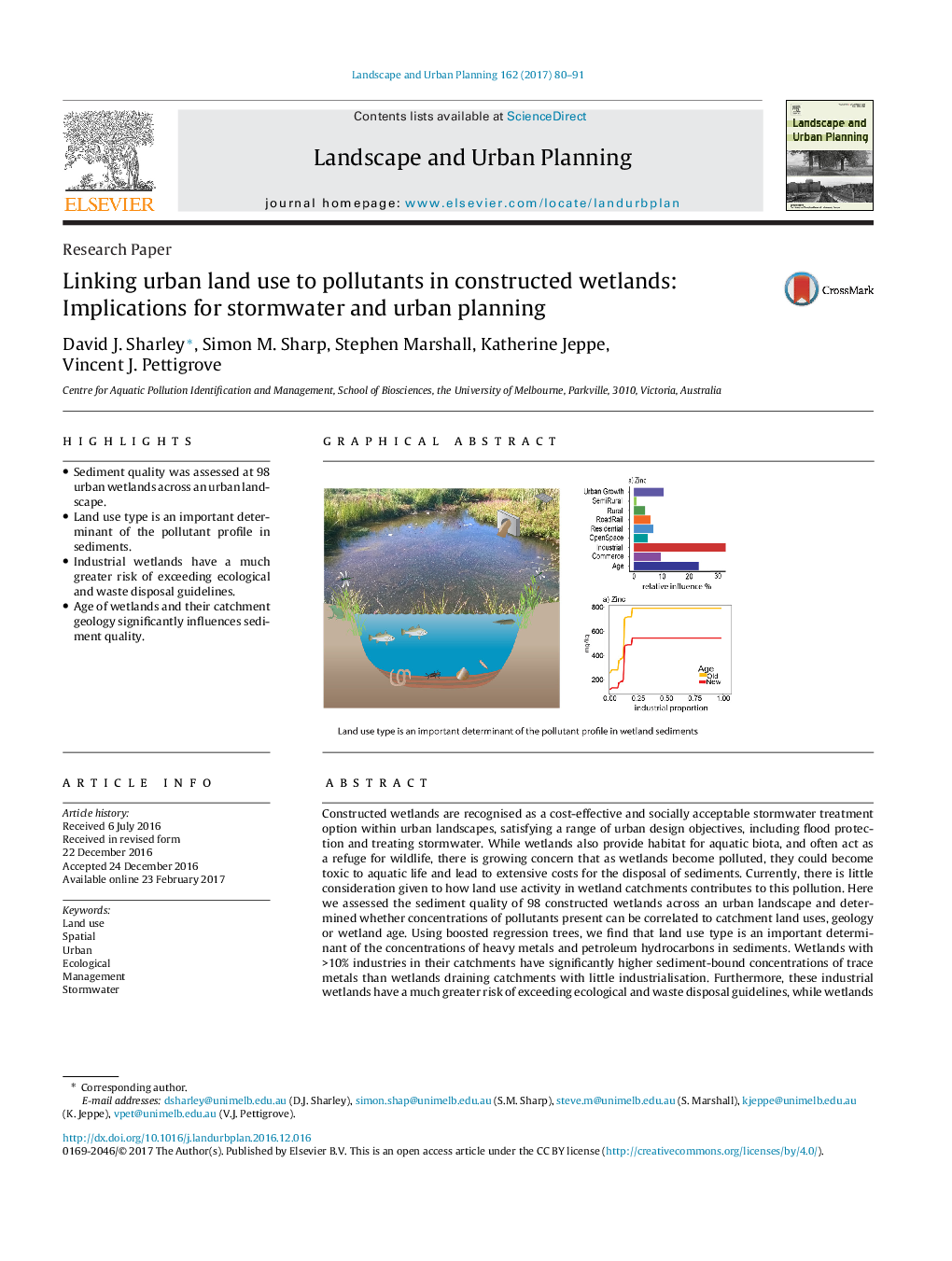| Article ID | Journal | Published Year | Pages | File Type |
|---|---|---|---|---|
| 5115047 | Landscape and Urban Planning | 2017 | 12 Pages |
â¢Sediment quality was assessed at 98 urban wetlands across an urban landscape.â¢Land use type is an important determinant of the pollutant profile in sediments.â¢Industrial wetlands have a much greater risk of exceeding ecological and waste disposal guidelines.â¢Age of wetlands and their catchment geology significantly influences sediment quality.
Constructed wetlands are recognised as a cost-effective and socially acceptable stormwater treatment option within urban landscapes, satisfying a range of urban design objectives, including flood protection and treating stormwater. While wetlands also provide habitat for aquatic biota, and often act as a refuge for wildlife, there is growing concern that as wetlands become polluted, they could become toxic to aquatic life and lead to extensive costs for the disposal of sediments. Currently, there is little consideration given to how land use activity in wetland catchments contributes to this pollution. Here we assessed the sediment quality of 98 constructed wetlands across an urban landscape and determined whether concentrations of pollutants present can be correlated to catchment land uses, geology or wetland age. Using boosted regression trees, we find that land use type is an important determinant of the concentrations of heavy metals and petroleum hydrocarbons in sediments. Wetlands with >10% industries in their catchments have significantly higher sediment-bound concentrations of trace metals than wetlands draining catchments with little industrialisation. Furthermore, these industrial wetlands have a much greater risk of exceeding ecological and waste disposal guidelines, while wetlands with catchments comprising primarily residential or peri-urban have significantly lower risk of becoming polluted. Results also suggest that the age of wetlands and their catchment geology significantly influences sediment quality. This research improves our understanding of the factors influencing pollution in urban areas and will enable wetlands to be better designed and managed to minimise their environmental impacts and maintenance costs.
Graphical abstractDownload high-res image (218KB)Download full-size image
